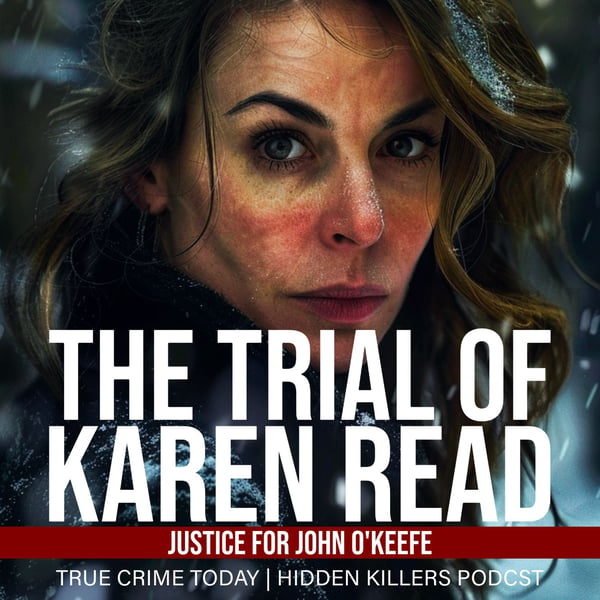Karen Read Trial: Jury From & Closing Argument Breakdown
The Trial Of Karen Read | Justice For John O'Keefe
Tony Brueski
2.2 • 614 Ratings
🗓️ 16 June 2025
⏱️ 41 minutes
🧾️ Download transcript
Summary
In this comprehensive episode, we break down the crucial jury instructions and analyze the dramatically different closing arguments presented in the Karen Read murder retrial. After 31 days of testimony from 50 witnesses, Judge Beverly Cannone spent over an hour instructing the jury on how to apply the law to the facts of this case that has captivated Massachusetts and beyond.
We examine the specific jury instructions given for each charge Karen Read faces: second-degree murder, manslaughter, and leaving the scene of an accident resulting in death. The episode details how Judge Cannone explained the concept of reasonable doubt, the Commonwealth's burden of proof, and what elements must be proven for each charge. We discuss how the judge instructed jurors to consider evidence of intoxication, intent, and whether Read's actions directly caused John O'Keefe's death on that snowy January night in 2022.
The episode then provides a detailed comparison of the closing arguments. Defense attorney Alan Jackson's hour and twenty-six minute presentation began with him declaring three times "there was no collision" and painting a picture of police corruption and cover-up. In contrast, prosecutor Hank Brennan's closing repeatedly emphasized that Read was "drunk, she hit him, then she left him to die," focusing on physical evidence and Read's own statements at the scene.
We analyze the strategic decisions made by both sides, including Jackson's heavy focus on discredited investigator Michael Proctor versus Brennan's emphasis on cell phone data showing O'Keefe never entered the Albert home. The discussion covers how each attorney addressed the controversial evidence, from taillight pieces to dog bite theories, and how they framed Read's "I hit him" statements - as either confused questions or guilty admissions.
#KarenRead #JuryInstructions #ClosingArguments #JohnOKeefe #MurderTrial #CourtTV #JudgeCannone #AlanJackson #HankBrennan #JuryDeliberations #SecondDegreeMurder #Manslaughter #ReasonableDoubt #TrialAnalysis #LegalBreakdown #BostonPolice #CantonMA #BigBreakdown #VerdictWatch
Want to comment and watch this podcast as a video?
Check out our YouTube Channel. https://www.youtube.com/@hiddenkillerspod
Instagram https://www.instagram.com/hiddenkillerspod/
Facebook https://www.facebook.com/hiddenkillerspod/
Tik-Tok https://www.tiktok.com/@hiddenkillerspod
X Twitter https://x.com/tonybpod
Listen Ad-Free On Apple Podcasts Here: https://podcasts.apple.com/us/podcast/true-crime-today-premium-plus-ad-free-advance-episode/id1705422872
Transcript
Click on a timestamp to play from that location
| 0:00.0 | This is the Hidden Killers podcast with Tony Bruske and continuing coverage of the case against |
| 0:05.7 | Karen Reid. And we now sit and we wait for the verdict. It's, it's here. It's here, everyone. |
| 0:17.2 | Some closing arguments today. We're going to talk about that, even listen to a little bit or watch a little bit. |
| 0:23.7 | But I think, you know, the first thing, the thing that was the big issue in the last trial, which Karen Reid tried to get to the Supreme Court to argue, the jury instruction form, the verdict sheets that they have to fill out because there was, |
| 0:41.4 | I guess, some confusion last time in some way, shape, or form where some people thought, |
| 0:46.4 | well, there was no way for us to express that we found her not guilty on this charge and this charge. |
| 0:52.8 | The only one that was in question was this one. |
| 0:56.0 | Obviously, after the fact, something should have been said back then. |
| 1:01.0 | Jury should have been polled, whatever. |
| 1:02.8 | So we have new forms. |
| 1:05.3 | They were, I'm always interested in this because this seems as weird that it's a last minute thing that the, the defendant or the defense and the prosecution, both they have to, you know, and the judge's ultimate decision, but they both can weigh in on what those forms should be and how they should be laid out. |
| 1:25.7 | And I guess why would that just not be settled before |
| 1:29.8 | the trial even begins? You know, and I don't know the answer to that. I wonder if it's because |
| 1:36.4 | they want to see how the trial plays out, what was said, so that they've got everything in this |
| 1:41.6 | capsule, and then they create the instructions based on the capsule. |
| 1:45.3 | Instead of, here's what we think it's going to be. |
| 1:48.0 | Or this came up and we didn't include it. |
| 1:49.9 | So they want to make sure they've got everything. |
| 1:51.4 | But it's just based on the charges. |
| 1:52.7 | The charges aren't changing. |
| 1:54.7 | So that's why I don't, like, why would you need to put some sort of context into the jury form for what took place in the trial? |
| 2:02.8 | The charges are still the same. |
... |
Please login to see the full transcript.
Disclaimer: The podcast and artwork embedded on this page are from Tony Brueski, and are the property of its owner and not affiliated with or endorsed by Tapesearch.
Generated transcripts are the property of Tony Brueski and are distributed freely under the Fair Use doctrine. Transcripts generated by Tapesearch are not guaranteed to be accurate.
Copyright © Tapesearch 2025.

